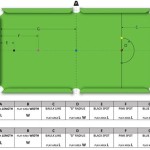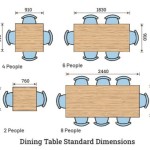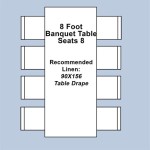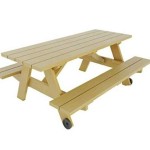Decoding Multiples: Exploring the Table Where 24 Appears
The number 24 is a composite number, meaning it has more than two factors (1 and itself). Understanding which multiplication tables 24 appears in is a fundamental aspect of grasping number theory and arithmetic. This exploration delves into the various multiplication tables where 24 is a product, highlighting the factors of 24 and the implications for mathematical operations.
The concept of multiplication tables is based on repeated addition. For instance, the 3 times table shows the results of repeatedly adding 3 to itself. Recognizing where 24 surfaces in these tables demonstrates an understanding of how numbers relate to each other through multiplication. This ability is crucial for simplifying fractions, solving equations, and performing various mathematical calculations.
The appearance of 24 in different multiplication tables highlights the diverse ways in which it can be composed. Investigating these relationships helps solidify the understanding of multiplication as a fundamental mathematical operation and provides a foundation for more advanced mathematical concepts.
Factors of 24 and their Multiplication Table Representation
The factors of 24 are the numbers that divide evenly into 24 without leaving a remainder. These factors form the basis for understanding where 24 appears in multiplication tables. Identifying these factors is critical for finding all the possible multiplication combinations that result in 24.
The factors of 24 are 1, 2, 3, 4, 6, 8, 12, and 24. This means 24 can be expressed as the product of any of these numbers paired with its corresponding factor. For example, 1 x 24 = 24, 2 x 12 = 24, and so on. Each of these factor pairs corresponds to a line in a multiplication table that results in the product of 24.
The table below illustrates the factor pairs of 24 and the corresponding multiplication facts:
1 x 24 = 24 2 x 12 = 24 3 x 8 = 24 4 x 6 = 24 6 x 4 = 24 8 x 3 = 24 12 x 2 = 24 24 x 1 = 24
This list represents the multiplication tables where 24 will be found. The order of the factors doesn't change the product (commutative property of multiplication), but it highlights that 24 can be found in both the 'x' table and the reverse (e.g., in both the 4 times table and the 6 times table). Recognizing this pattern is essential for quick recall of multiplication facts.
Understanding the factors of a number allows for easier manipulation of fractions and algebraic expressions. For example, simplifying the fraction 24/48 requires recognizing that 24 is a factor of both the numerator and the denominator. This understanding simplifies the fraction to 1/2 efficiently.
Specific Multiplication Tables Containing 24
Knowing the factors of 24 makes it easy to identify the multiplication tables where 24 can be found. This section examines each relevant table, emphasizing the position of 24 within each.
The
1 times table
contains 24, as 1 x 24 = 24. This serves as a fundamental illustration of the multiplicative identity property, where any number multiplied by 1 equals itself.The
2 times table
includes 24 because 2 x 12 = 24. This highlights 24 as an even number, divisible by 2. Understanding even numbers and divisibility by 2 is a building block for more complex arithmetic.The
3 times table
contains 24, as 3 x 8 = 24. This demonstrates the relationship between 3 and 24, showing that 24 is a multiple of 3. This understanding is useful in problem-solving scenarios involving groups of three.The
4 times table
features 24 because 4 x 6 = 24. This reinforces the concept of multiples and factors, showing that both 4 and 6 are factors of 24. Knowing this relationship can assist in mental math calculations.The
6 times table
contains 24, as 6 x 4 = 24. This complements the 4 times table, further solidifying the understanding of factor pairs. The commutative property ensures that both 4 x 6 and 6 x 4 result in 24.The
8 times table
includes 24, where 8 x 3 = 24. This reiterates the relationship between 8 and 24, showcasing 24 as a multiple of 8. Recognizing this association is helpful in simplifying division problems.The
12 times table
also contains 24, with 12 x 2 = 24. This pair shows that 12 is also a factor of 24. Understanding this facilitates manipulations in algebra and fractions.Finally, the
24 times table
includes 24, as 24 x 1 = 24. This highlights the number itself being present in its own multiplication table, reinforcing the concept of a number being a multiple of itself.Identifying the specific multiplication tables where 24 appears is essential for memorizing basic multiplication facts and developing fluency in arithmetic. This knowledge simplifies more complex calculations and provides a solid foundation for advanced mathematical studies.
Practical Applications of Understanding 24's Multiples
The knowledge of which multiplication tables contain 24 extends beyond simple memorization. It has practical applications in various areas of mathematics and everyday problem-solving.
One application lies in
simplifying fractions
. If a fraction contains 24 as either the numerator or denominator (or both), understanding its factors can help simplify the fraction to its lowest terms. For example, 24/36 can be simplified by recognizing that both numbers are divisible by 12, leading to 2/3.Another application is in
divisibility rules
. Knowing that 24 is divisible by 2, 3, 4, 6, 8, and 12 helps determine if other numbers are also divisible by these factors. For instance, if a number is divisible by both 3 and 8, it is also divisible by 24.Understanding multiples of 24 is also relevant in
calculating area and volume
. If a rectangular area is 24 square units, knowing the factor pairs of 24 helps determine possible length and width combinations. Similarly, if a volume is 24 cubic units, the factors can help determine possible dimensions of the solid.In
real-world scenarios
, understanding multiples of 24 can be useful in situations involving time, measurement, and distribution. For example, if there are 24 hours in a day, understanding its factors can help divide the day into equal segments for various activities. Similarly, if a quantity of 24 items needs to be divided equally among a group, knowing its factors will facilitate this division.Further applications include
cryptography
. While the specific number 24 might not be directly used in complex encryption algorithms, understanding factors and multiples is crucial for number theory, which forms the basis of many modern cryptographic systems.Furthermore, the concept of finding multiples translates to
programming
. Determining if a number is a multiple of another is a common operation in programming, often used for tasks such as formatting data or creating patterns.The ability to quickly recall and utilize the factors and multiples of 24 empowers efficient problem-solving in various contexts. It is a testament to the importance of understanding fundamental mathematical concepts and their practical applications.
In various disciplines, from engineering to finance, a solid understanding of fundamental mathematical principles enhances analytical and problem-solving capabilities. Recognizing where 24 falls within multiplication tables acts as an essential building block for grasping more complex mathematical concepts.

Table Of 24 Here

Table Of 24 Maths Multiplication

Multiplication Table Poster 15x15 Squares Cubes

Multiplication Table 2 From 1 To 100

Multiplication Tables 21 To 30

Multiplication Table 2 From 1 To 100

Free Printable Multiplication Chart Table

4 5 And 6 Times Table Play Panel Playground Equipment

When It Comes To Learning

2 To 11 Table Multiplication In Hindi








